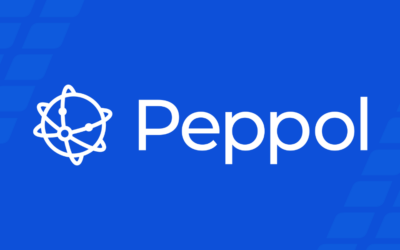Combining AI and blockchain to increase the value of your EDI workflows
EDI is a constantly evolving technology that has existed since the 1990s. In 2020, 85% of the world’s supply chain workflows were handled using EDI. In this article, we explain why EDI is still relevant in today’s supply chain, and how emerging technologies are positioned to provide a response to the ever-growing demand for data synchronization and sharing between different players.
EDI, an aging technology ?
What is EDI?
EDI is used to exchange computer-based data between two companies, in particular between two information systems. All types of information can be exchanged and the workflows can be integrated automatically into information systems.
EDI is frequently used to exchange workflows for:
- Orders
- Deliveries
- Invoices
EDI standards also exist to digitalize many other types of documents, such as price lists, product reference data, shipping orders, and more.
EDI: when formats and standards evolve
EDI has been around since the 1990s, first emerging in the automotive industry, banking sector, and retail/supermarket sector.
Since that time, many business sectors and professions have gotten together to define standards and establish specific protocols for their activity, types of workflows, needs to exchange data in real-time, geographical region, and more. These professional communities largely contributed to the widespread adoption of EDI by companies across all business sectors.
The growth of the Internet and intensification of digitalized exchanges offered a way to make workflows more reliable while also reducing the cost of transporting messages. EDI technology is enriched continually as new technologies emerge.
EDI evolves by combining with other technologies
Recent technologies such as blockchain, the Cloud, and API networks are complementary to EDI. They provide solutions for new client challenges that are not, at this time, fully covered by traditional EDI standards, such as connectivity.
EDI will change, not disappear. Moving to the Cloud not only saves time and money for exchanges between partners, but it also offers a means to:
- Access other partners just as quickly
- Automate a variety of operations
- Handle much higher volumes of information
- Process information workflows faster
Combined with EDI, new technologies increase agility and connectivity for the supply chain, despite the complexity and heterogeneity of data workflows.
How do AI, blockchain, and APIs enhance EDI ?
Supply chains have become more extensive and more complicated than ever, requiring connectivity that is secure, reliable and, above all transparent. One of the limits of EDI, as it had been used previously, was that it worked well between two partners, A and B. As soon as other players were involved, messages had to be replicated between them to maintain the same level of information. With the growing exchange volume and increased format diversity, it was starting to become quite complicated to ensure consistency across all transactions.
EDI networks will continue to play their role in the supply chain, and external technologies will step in to address those issues:
- Blockchain to ensure transparency for exchanges
- Artificial intelligence to use the data effectively
How blockchain enhances EDI workflows
The blockchain is a registry shared by all supply chain stakeholders. It “locks” the various passing information. All the information in the blockchain remains unchanged. Blockchain brings a transactional layer to the system, simultaneously enabling EDI messages to be shared on a point-to-point basis and to be completed with information from other sources. Collaboration is therefore more transparent between all parties, and also more efficient (such as for detecting upstream errors or adding information).
How artificial intelligence enhances EDI workflows
It is important to be able to use all the data generated by the supply chain, connected objects (IoT devices), and other relevant external data sources. This is a role that can be handled by artificial intelligence, which “knows” the workflows, their nature, and related business issues, thus extracting usable information and enabling companies to leverage that information as appropriate. For example, imagine that you have an order on the way and there is a refrigeration problem during shipping. Instead of finding out upon receiving the order that it must be destroyed and a new order placed, the artificial intelligence can detect the error ahead of time and give you time to take corrective action much earlier.
AI can be used to address 4 key points:
- Alerts: providing information regarding potential risks before a deadline.
- Understanding: predict the “domino” effect related to risks.
- Resolution: extract relevant information to help operators find a solution.
- Learning: AI improves itself with experience and can offer increasingly relevant and targeted recommendations.
Companies therefore start with EDI (or with an EDI network) and then integrate additional technologies to better address new issues that arise. EDI is not an aging technology, but rather one that is indispensable and can be enhanced by AI, blockchain, and the Cloud.



